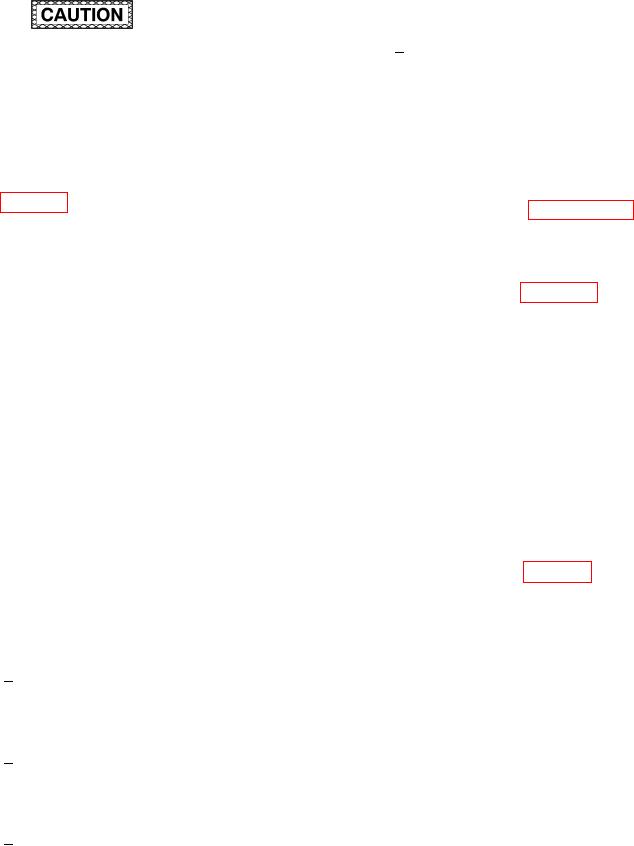
TM 1-1500-204-23-11
(1) Heat Blanket/Vacuum Technique.
give more permeability and allow
moisture to be drawn out; or see
step four.
4
One ply of heat-set and scoured
Never use less than three thermocouples to
peel ply placed directly over the
monitor a heating cycle. Support removed
damage removal area followed
core areas, exposed core and core edges to
by breather cloth. Heat-set and
prevent the vacuum bag from damaging or
scoured is a process performed by
crushing the core.
manufacturers during the produc-
tion of certain peel plies.
The following drying procedure is an effective
method for drying laminate parts with high moisture
(e) Prepare and apply a vacuum bag over
content. This drying method works well on all com-
the breather material and the insulated
posites. See igure 6-9 for typical drying times for
heat blanket. See paragraph 6-18 for
composite laminates.
additional vacuum bagging information.
A minimum vacuum of 22 inches of
(a) Ensure damaged material and paint
mercury is initially required. If available,
have been removed in preparation for
insert a moisture desiccant/moisture
the bonded repair. Support removed
indicator (shown in igure 3-26) between
core areas, exposed core and core
the vacuum source and the vacuum
edges to prevent the vacuum bag from
bag.
damaging or crushing the core.
(f)
After a good vacuum seal is made, at
(b) Machine the repair joint as described in
the end of the bag and farthest away
the appropriate repair section. Never
from the vacuum source, induce a seal
use less than three thermocouples to
leak. This seal leak provides air move-
monitor a heating cycle.
ment through the bag, drawing the
moisture out. A vacuum level of 10 to
(c) Attach thermocouples to the part at
16 inch mercury should be utilized.
least 2 inches in from the edge of the
heat blanket that will be used. Connect
(g) Heat the part surface to 20 F less
the thermocouples to both a monitor
than the part service temperature or
and recording device if required.
180 (10) F, whichever is lower, at a
rate of approximately 5 to 10 F per
(d) Place two plies of iberglass breather,
minute. Hold at temperature until dry.
7500 if available over the area to be
See drying chart in igure 6-9. Cool at a
dried to provide a moisture escape path,
maximum rate of 10 F per minute down
other iberglass weaves such as 181 or
to ambient temperature. Release the
120 are not as permeable. Use one of
vacuum and remove the entire vacuum
the following guidelines when selecting
bag. If the moisture indicator still shows
a breather:
moisture present, lengthen hold time
until no moisture is present.
Commercially
manufactured
1
breather cloths have contaminates
(h) Sand the area lightly, as necessary as
and should not be placed directly
allowed by the repair procedure.
on the repair area.
(i)
Proceed with the repair.
2
Two plies of iberglass cloth; 7500
weave is preferred because it
(2) Oven Technique. Use this procedure when
is more permeable than other
an oven is the heat source for performing bonded
weaves; or,
repairs. This will ensure that any undetectable water
3
Three plies of heat-set and scoured
vapor in the core assemblies will not cause part
peel ply; other peel plies may have
damage. It is also used for removal of water located
release agents and/or contami-
in a nonrepairable zone. The oven is used to heat the
nates which will interfere with the
water in the part and to drive it out the way it came
future bonding operation. Alternate
in. An envelope vacuum bag (a vacuum bag that
the weave orientation of the plies
completely surrounds the part) is used to ensure a
by approximately 45 degrees to
path exists for moisture egress. A moisture indicator
6-14

